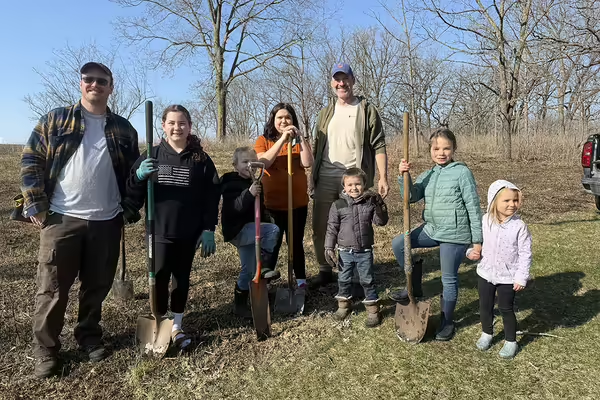
OREGON, Ill. - Illinois was once home to 14 million acres of trees, which included a unique ecosystem called an oak savannah. Now, the oak savannah is considered by the Illinois Forest Action Plan to be the most threatened plant community in the Midwest. A savannah is a plant community with scattered “open canopy” fire-tolerant native oak trees growing in a group.
Ogle County 4-H planted 25 oak trees at the Byron Forest Preserve to bring new life to oak-hickory trees. The 4-H Green Communities Tree Program focuses on tackling global issues at a local level.
Throughout the spring of 2025, youth in 49 counties throughout Illinois are planting oak trees on public properties in their county for a total of 1,225 newly planted trees across the state.
The 4-H Green Communities Tree Program follows the "learn-by-doing" philosophy of 4-H and is guided by the priorities of the Illinois Forest Action Plan. This project has attracted National attention, as we have established 118 new oak savannas, with Illinois 4-H planting trees in 66 counties in just 3 years. To help support this project, please visit: https://go.illinois.edu/4hgreencommunity.
PHOTO: Ogle County 4-H members and their families participated in the 4-H Green Communities Tree Program.
University of Illinois Extension develops educational programs, extends knowledge, and builds partnerships to support people, communities, and their environments as part of the state's land-grant institution. Extension serves as the leading public outreach effort for University of Illinois Urbana-Champaign and the College of Agricultural, Consumer and Environmental Sciences in all 102 Illinois counties through a network of 27 multi-county units and over 700 staff statewide. Extension’s mission is responsive to eight strategic priorities — community, economy, environment, food and agriculture, health, partnerships, technology and discovery, and workforce excellence — that are served through six program areas — 4-H youth development, agriculture and agribusiness, community and economic development, family and consumer science, integrated health disparities, and natural resources, environment, and energy.